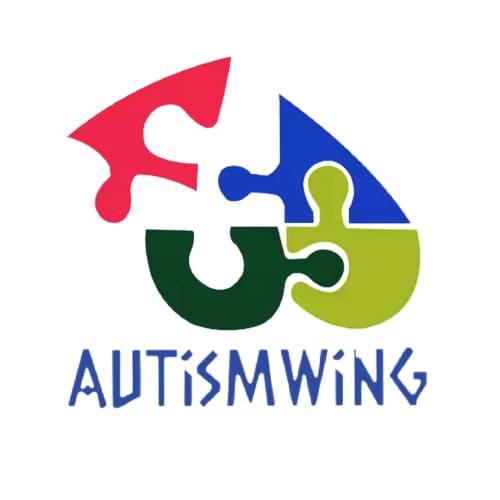Utilization of Community Clinic as Autism Center
Community clinic is the community-based health care center in Bangladesh to provide Primary Health Care Services to the distress people of the country. It has been established to provide healthcare, family planning, and nutrition services to the poor people of the country who are deprived of their basic right to health issues. There are many clinics of this nature in the rural areas of Bangladesh. This clinic is also available in developed countries like the USA to provide medical care to the uninsured or under-insured people who all are economically and socially vulnerable.

More than 65% of the people of Bangladesh live in the rural areas and they have to depend upon the Upazila Health Complexes or on the village doctors for their health care. Most of the ladies of the rural areas, generally, do not feel like to visit the doctors or they are not taken to the doctor being neglected. So, the community clinic is the best place to provide treatment to those ladies.
In this article, I would like to discuss how the existing Community Clinics in Bangladesh can be utilized as Autism Center to provide the primary autism diagnosis functions and therapy services to help a big chunk of autistic individuals throughout the country.
Origin of the Community Clinic in Bangladesh
In 1996, the Government of Bangladesh decided to establish one Community Clinic (CC) for every 6000 population to bring the poor people of the rural areas under health program. In 1998, the Government of Bangladesh (GOB) planned to establish 13500 CCs in different areas of Bangladesh. The first Clinic of this type was established in Bangladesh at Patgati of Tungipara in Gopalgonj district in 1998 and inaugurated by the present Prime Minister Sheikh Hasina. During 1998-2001 period 10,723 Community Clinics were constructed and 8,000 started functioning. But the program was stopped in 2001.
In 2009, the government again revived the CC programme and established the Revitalization of Family Health Care Initiatives in Bangladesh (RCHCIB) under the Ministry of Health and Family Welfare (MoHFW). Under this program, the government decided to establish 18 000 clinics throughout the country. Till today, about 13136 CCs have been established in different areas in Bangladesh.
Management of Community Clinic
The present structure of the CC is established under the public-private partnership project. The clinic is established at the land donated by the villagers whereas the cost of construction, medicines and other clinical facilities are provided by the government of Bangladesh.
Each CC is controlled and managed by the managing committee named Community Group (CG) consists of local community members, elected local government representatives including women, teachers, representatives of landless and poorest of the poor, and adolescent girls and boys.
Each member of the CG undergoes different types of training on security, cleanliness and day-to-day maintenance matter for running the CC effectively. A Community Health Care Provider (CHCP) is appointed by the Government of Bangladesh who acts as the Member Secretary of the CG and manages the day to day activities of the clinic and provides health care services to people of the area.
Services in the Community Clinic
At present, there is about 13136 CCs in Bangladesh. Each clinic is provided with a laptop and internet facilities to establish e-health connection from the community clinic to the Upazila Health complex. The in-charge of the clinic is called CHCP.
Now the local people can avail healthcare, family planning, and nutrition services under one roof and within a half-an-hour walking distance from their homes, even in remote rural areas. The CCHP provides contraceptives to the villagers and advice to the pregnant women during the prenatal and postnatal period. They advise the guardian of the teenage girls regarding the consequences of early marriage. They also provide medicines for diarrhea, pneumonia and other childhood infections. The doctors from the Upazila Health Complex visit the CC from time to time.
Utilization of Community Clinic as Autism Center
In addition to the primary role of the CC, the government can establish an Autism Center or Autism Wing in each community clinic to provide initial diagnostic services to the children of the villages on autism spectrum disorders. They can also be supported by different types of therapy services to the autistic children who are already diagnosed. As these clinics are financed by JICA and assisted by WHO, they can be approached in this regard to provide some autism therapy products to each clinic.
The CCHPs can be imparted a limited scale training about the symptoms of autism at different levels of a child. They can also be provided with the Autism Symptoms Checklist. When some abnormalities are found in a child, the parents can visit the community clinic and the CCHP will see the condition of the child in relation to the Autism Checklist preserved in the clinic. Then s/he will refer the patient to the Upazila Health Complex or any other Autism Center for further diagnosis and confirmation.
When a child is diagnosed with autism, the community clinic can be utilized for providing therapies free of cost to the poor people of rural Bangladesh. The GOB will be required to provide some therapy items to the community clinic. The CCHP will send the autistic children to the higher facilities for further check if needed. This way the community clinic can be best utilized for the development of the autistic children.
The financial implication of these proposed Autism Center of the CC is not that much. There are 68000 villages in Bangladesh and 68000 community clinics will be required to cover entire Bangladesh.
The newly elected government may continue its program of Community Clinic with more dynamism and establish one autism center at each clinic. Moreover, it may establish a few thousands of community clinics with an autism center in every financial year to cover all the villages in the next 5 years.
Conclusion
Establishment of Community Clinic is a very good initiative by the government of Bangladesh with the help of the World Health Organization. Till today, about 13136 community clinic has been established throughout the country and they are providing health care services to the people. But there are some difficulties which pulling back this noble work of ensuring health care services to the poor people of the villages.
With the active participation of everybody, the CC can be established as the hub of the rural healthcare system. In addition to its present role, the community clinic can also be utilized as the autism center or autism wing in the rural areas for the development of the special needs children. This can be a giant step for the development of the autistic children of Bangladesh.



